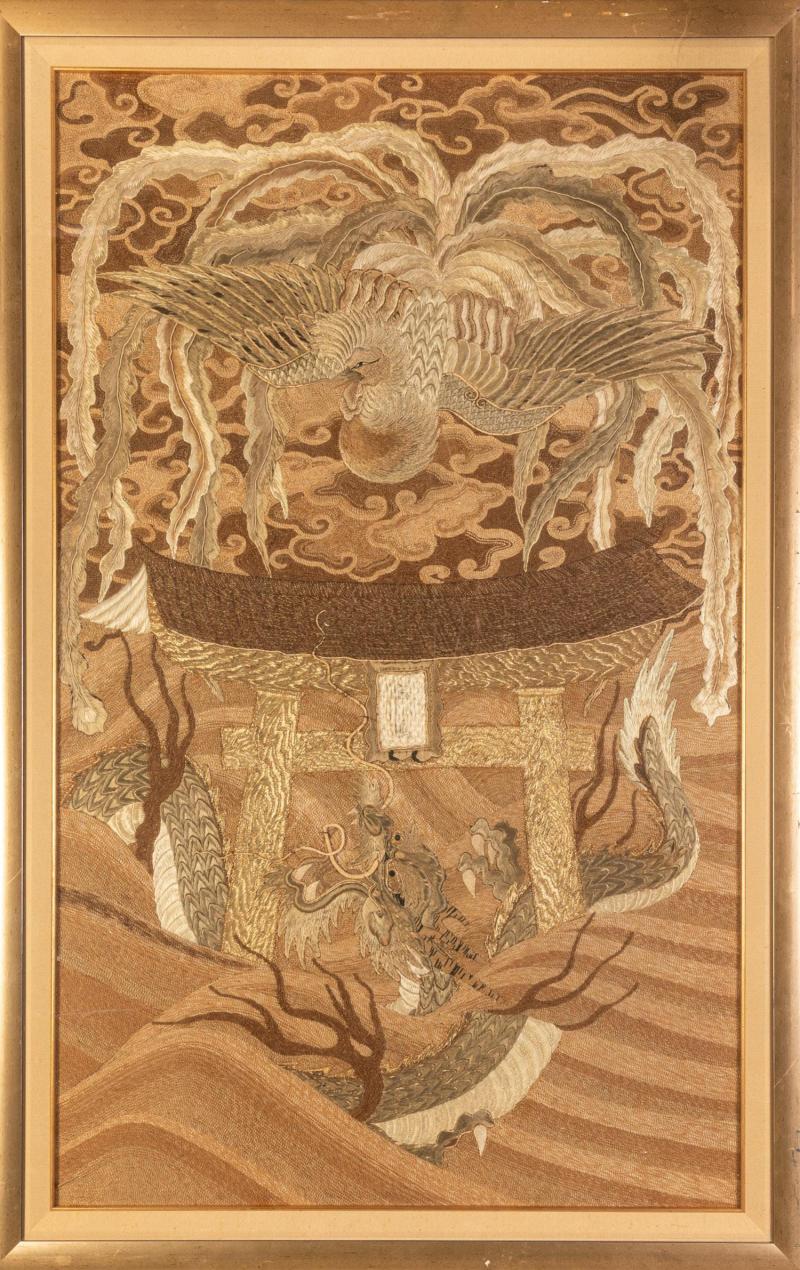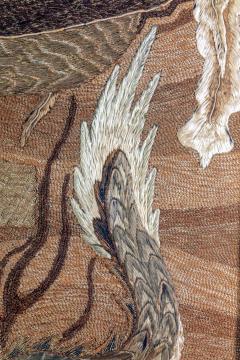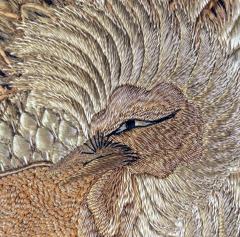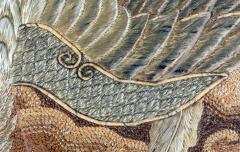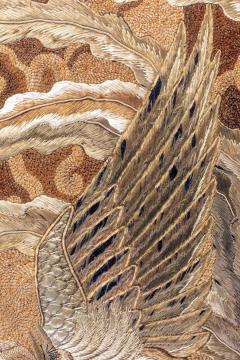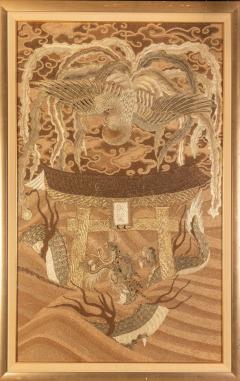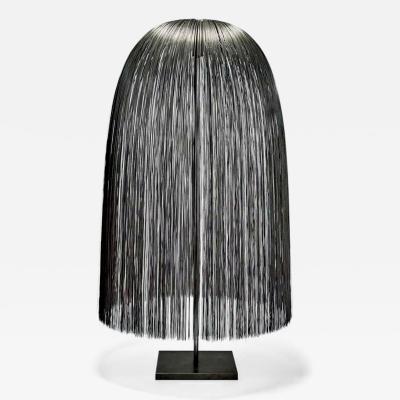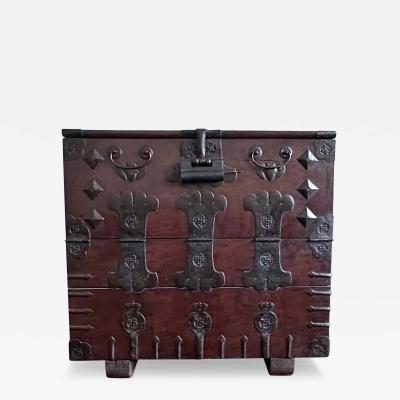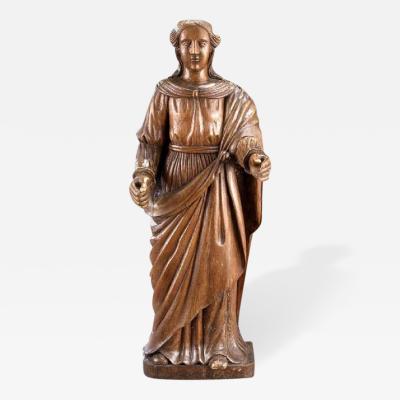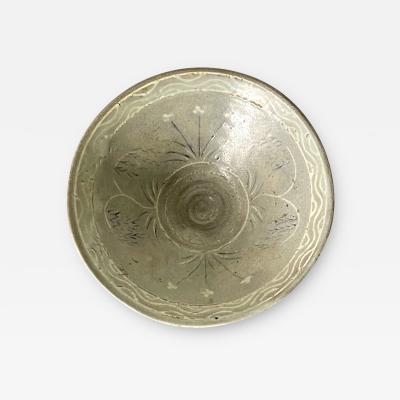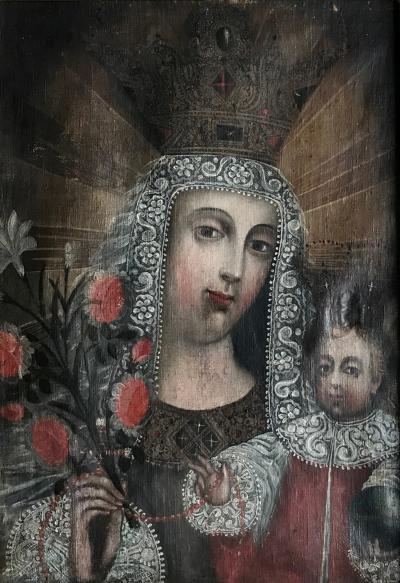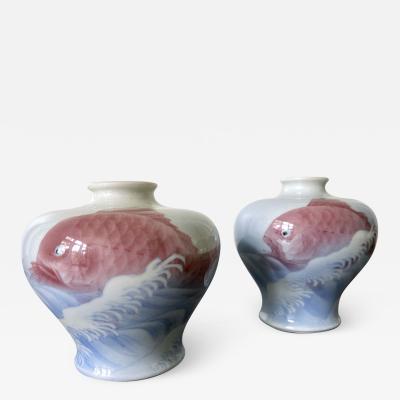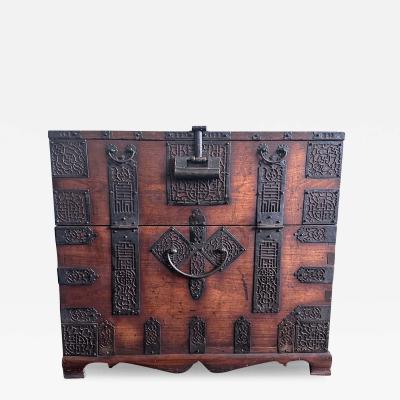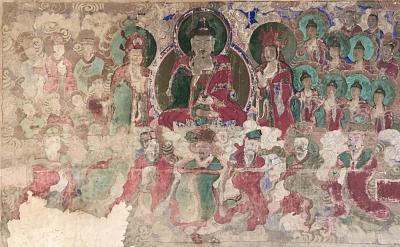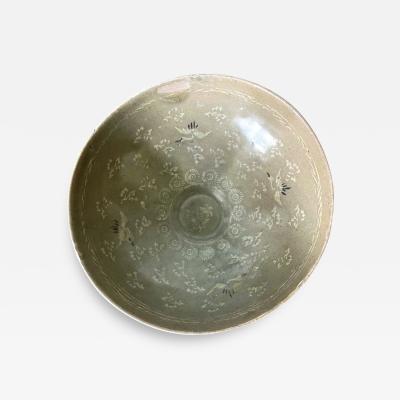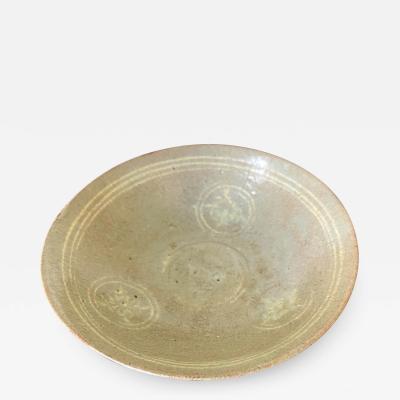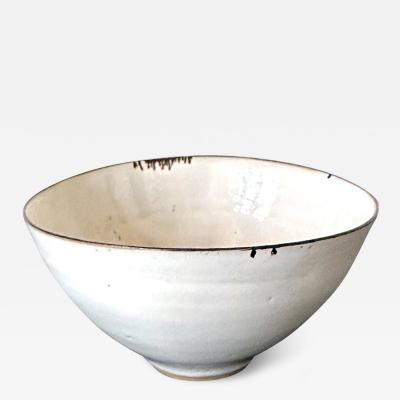Framed Japanese Antique Phoenix and Dragon Tapestry Textile Meiji Period
-
Description
A visually stunning Japanese embroidery tapestry circa 1890-1900s late Meiji period, presented with a linen matt with gold trim in a gilt wood frame. The design showcases a flying phoenix with splendid plumage above a torii gate rising from the water and a dragon slithering in the waves below. The torii gate bisects the image into the heaven above and the ocean below, and the background is filled respectively with scrolling clouds and stylized waves. The torii gates are commonly found at the entrances of Shinto shrines, as a threshold landmark for the transition from the mundane to the sacred. While the dragon does not represent the emperor in general as in Chinese culture, it is worshipped as a water deity in Japan. The phoenix, an auspicious symbol similar to its Chinese counterpart Fenghuang, represents the Japanese empress descended from heaven. The craftsmanship of this piece is superb. The high relief effect, created by meticulous techniques such as satin stiches, couching and piling with layers of gold and silver wrapped threads, displays a harmonious composition while conveying a livid sense of motion, and this set the piece apart as a highly collectible textile art.
Japanese textiles from Meiji period were widely exhibited in the west during turn of the 20th century at the international expositions. It was used to showcase the Japanese aesthetics with the techniques at their pinnacle. These expositions solidified the country's images overseas and fueled the Japonisme craze in the west, which turned out to be a long lasting influence on the western art. Many pieces were purchased and stayed in the west. It is likely this estate piece was from one of the expositions based on its high quality.
For a tapestry of phoenix, see "Threads of silk and gold ornamental textile from Meiji Japan Ashmolean", page 95.
A tapestry of dragon see "Re-envisioning Japan Meiji Fine Art Textile, John E. Vollmer", page 42-44.
For detailed terminology of embroidery techniques used in this work, please refer to threads of silk and gold ornamental textile from Meiji Japan Ashmolean page 86-87. -
More Information
Origin: Japan Period: 19th Century Materials: silk and giltwood frame Condition: Good. Textile appears very fine, not examined out of the frame. Giltwood frame shows general wear like small scrapes and dings and some later touchups. It can benefit from a new frame. Creation Date: 1890-1900s Styles / Movements: Bespoke, Asian, Traditional Patterns: Animal/Insects, Asian/Oriental, Geometric, Handmade Incollect Reference #: 447726 -
Dimensions
W. 34.25 in; H. 53 in; D. 0.7 in; W. 87 cm; H. 134.62 cm; D. 1.78 cm;
Message from Seller:
Tishu, based in Atlanta, GA, offers a diverse collection ranging from Neolithic art to 20th-century collectibles, with a focus on Mid-century design, Japanese and Korean art, Asian textiles, and Contemporary Aboriginal art. Driven by a passion for timeless beauty, the gallery is open by appointment only and offers works that span 5,000 years of history. Reach them at 305-400-0561 or tishu@tishugallery.com.















